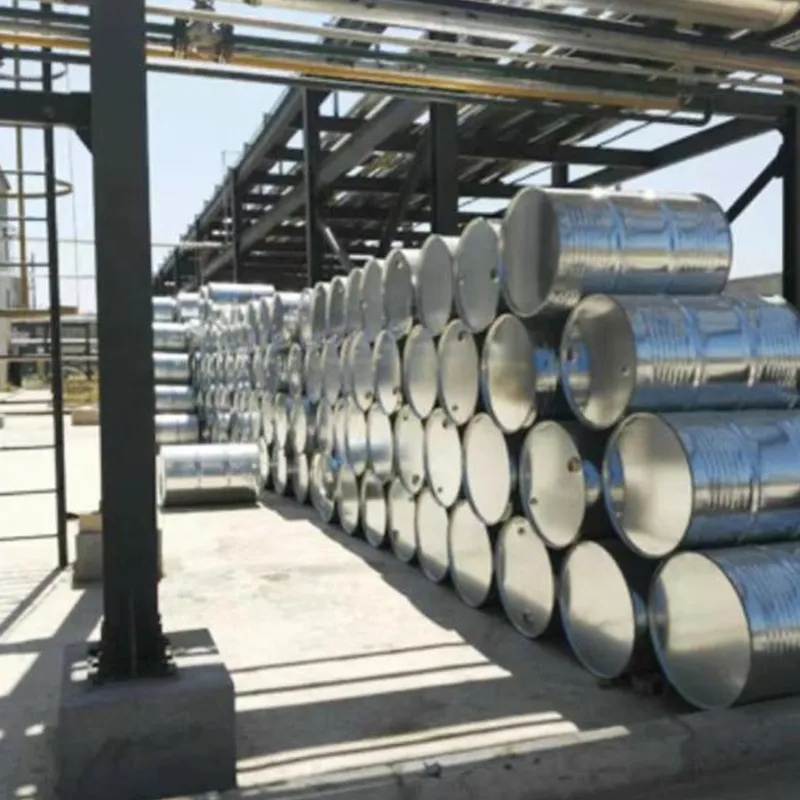
cake emulsifier
The Role of Cake Emulsifiers in Baking
Baking a delicious cake is both an art and a science. While many factors contribute to the perfect cake, one crucial component is the emulsifier. Emulsifiers play a significant role in baking, particularly in cakes, where they contribute to texture, moisture retention, and overall quality. This article will explore the importance of cake emulsifiers, their functions, and how they impact the final product we all love.
What are Emulsifiers?
Emulsifiers are substances that help blend two or more immiscible liquids, such as oil and water. In baking, they create stable emulsions, which ensure that fats and liquids combine well during the mixing process. This is vital for cake recipes, as the proper incorporation of ingredients is essential for achieving a consistent batter.
Common Types of Emulsifiers
There are several types of emulsifiers commonly used in cake baking
1. Lecithin Extracted from soybeans or egg yolks, lecithin is one of the most widely used emulsifiers in baking. It helps to improve the texture of the cake, enhancing its moistness and softness.
2. Mono- and Diglycerides These are derived from the glycerol and fatty acids found in fats. They are commonly used in commercial baking to improve the shelf life and texture of cakes.
3. Polysorbate 60 and 80 These synthetic emulsifiers stabilize mixtures and improve the cake's volume and crumb structure.
Functions of Cake Emulsifiers
cake emulsifier

Emulsifiers serve multiple functions in cake baking
1. Texture Enhancement By creating a stable emulsion, emulsifiers help to distribute fats evenly throughout the batter. This results in a uniform texture, allowing for a finer crumb structure that is both light and moist.
2. Moisture Retention Cakes can easily dry out, especially after cooling. Emulsifiers help retain moisture, which extends the cake's freshness and shelf life. This is particularly important for commercially produced cakes, which may sit on shelves for longer periods.
3. Improved Volume and Rise Emulsifiers contribute to the aeration of the batter. They assist in stabilizing the bubbles formed during mixing, which helps the cake rise during baking. A well-aerated batter results in a cake that is fluffy and light.
4. Fat Distribution Emulsifiers aid in the even distribution of fats, ensuring that every bite of cake has a consistent taste and texture. This uniformity is key to creating a pleasurable eating experience.
The Impact on Cake Quality
Using the right emulsifiers can significantly impact the quality of a cake. A cake with well-integrated emulsifiers is more likely to have a desirable texture, better moisture retention, and greater shelf stability. Conversely, the absence of emulsifiers may lead to a crumbly or dry cake, resulting in a less enjoyable product.
In homes and bakeries alike, understanding the role of cake emulsifiers can enhance baking outcomes. For home bakers, incorporating emulsifiers can elevate standard recipes, leading to cakes that rival those found in commercial bakeries.
Conclusion
Cake emulsifiers are a vital ingredient in baking, playing a crucial role in ensuring cakes are light, moist, and delicious. By stabilizing emulsions, improving texture, and extending shelf life, emulsifiers offer numerous benefits to both home bakers and commercial producers. As baking continues to evolve, the understanding and utilization of emulsifiers will remain a central theme in creating the perfect cake. So the next time you indulge in a slice of cake, take a moment to appreciate the science behind its delightful texture and taste—thanks to the humble but powerful cake emulsifier.
-
Pure Sodium Dichloroisocyanurate Dihydrate | Powerful DisinfectantNewsAug.29,2025
-
Industrial Chemicals: Quality & Purity for Every IndustryNewsAug.28,2025
-
Nitrile Rubber Honoring Strict Production StandardsNewsAug.22,2025
-
Aspartame Ingredients Honoring Food Safety ValuesNewsAug.22,2025
-
Fertilizer for Balanced Plant NutritionNewsAug.22,2025
-
Cyanide Gold Processing with High Purity AdditivesNewsAug.22,2025
-
Formic Acid in Textile Dyeing ApplicationsNewsAug.22,2025
Hebei Tenger Chemical Technology Co., Ltd. focuses on the chemical industry and is committed to the export service of chemical raw materials.
-

view more DiethanolisopropanolamineIn the ever-growing field of chemical solutions, diethanolisopropanolamine (DEIPA) stands out as a versatile and important compound. Due to its unique chemical structure and properties, DEIPA is of interest to various industries including construction, personal care, and agriculture. -

view more TriisopropanolamineTriisopropanolamine (TIPA) alkanol amine substance, is a kind of alcohol amine compound with amino and alcohol hydroxyl, and because of its molecules contains both amino and hydroxyl. -

view more Tetramethyl Thiuram DisulfideTetramethyl thiuram disulfide, also known as TMTD, is a white to light-yellow powder with a distinct sulfur-like odor. It is soluble in organic solvents such as benzene, acetone, and ethyl acetate, making it highly versatile for use in different formulations. TMTD is known for its excellent vulcanization acceleration properties, which makes it a key ingredient in the production of rubber products. Additionally, it acts as an effective fungicide and bactericide, making it valuable in agricultural applications. Its high purity and stability ensure consistent performance, making it a preferred choice for manufacturers across various industries.





